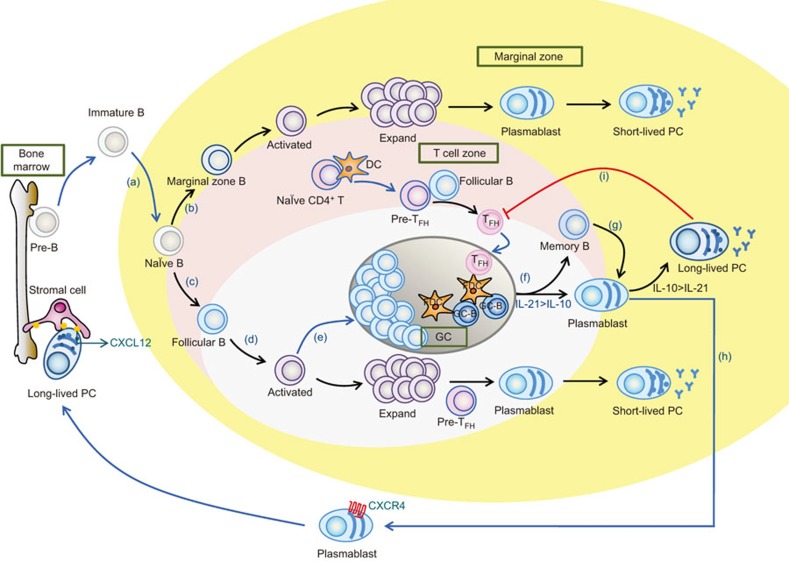Figure 1.
PC development in lymphoid tissues. (a) Immature B cells leave the bone marrow and migrate to the lymphoid tissues. In the spleen, immature B cells can mature into either marginal zone B cells (b) or follicular B cells (c). (b) When activated at the T/B border, the marginal zone B cells rapidly differentiate into IgM-secreting plasmablasts and short-lived PCs in a T-independent manner to participate in the early immune response. (d) After being activated, follicular B cells with intrinsically higher affinity will preferentially migrate to the extrafollicular area, where they undergo rapid expansion and become short-lived PCs with the help of pre-follicular helper T (pre-TFH) cells. (e) Follicular B cells with lower affinity receptors enter the follicular foci to form the GC. (f) Within the GC, TFH cells continue providing assistance to the B-cell development, maintain the GC reaction, and facilitate the production of long-lived PCs and memory B cells. (g) When an antigen is present for a second time, memory B cells can rapidly differentiate into PCs to help resist an infection. (h) A portion of plasmablasts developed in the GC migrate to the bone marrow under the control of CXCL12 to find survival niches that ensure the steady survival of long-lived PCs. (i) PCs negatively regulate TFH cells. IL-21 has a potent effect on centroblasts differentiating into plasmablasts, and IL-10 has a greater impact on the differentiation of PCs from plasmablasts than does IL-21. GC, germinal center; PC, plasma cell; TFH, follicular helper T.

